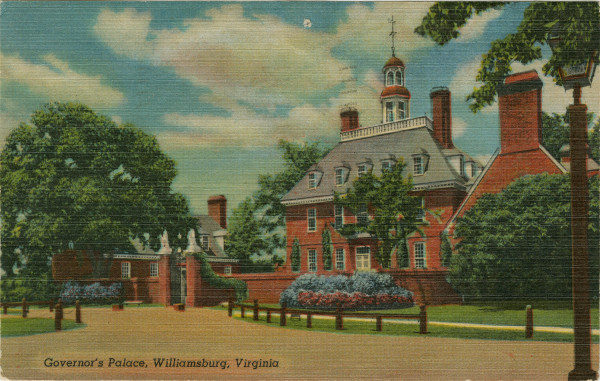
What can you learn from a postcard? For starters, you can see how Colonial Williamsburg’s Historic Area has evolved as new research deepens our understanding of life in the 18th century. Join us on this journey through some classic postcards from the collections at Colonial Williamsburg’s Rockefeller Library, and get inspired to plan your next visit!

Colonial Williamsburg Foundation.
This 1950s postcard shows a scene from “Williamsburg: The Story of a Patriot,” which was shot in front of the Capitol. The film is a must-see introduction to revolutionary Williamsburg, but here’s something you may not know: It’s also the longest-running motion picture in history. A staple at the Visitor Center since 1957, it’s shown in a specially built theater.
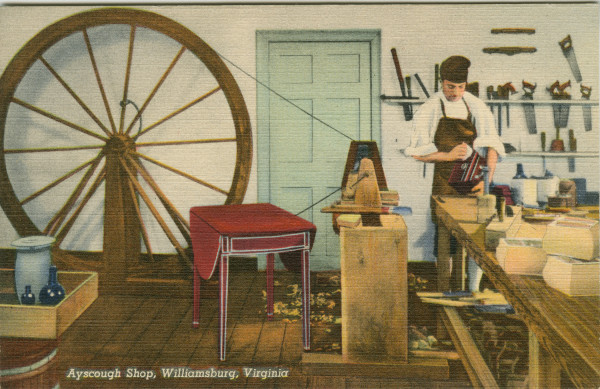
Curt Teich & Co., Chicago, Ill. Visit their archive.
The Ayscough Shop near the Capitol has been home to Cabinetmakers, Gunsmiths, and the Joiners. The Gunsmiths are moving back there this month. The Cabinetmakers moved with their great wheel lathe pictured here to the Hay shop in the 1960s. Unlike the somewhat elaborate table pictured, a “plain and neat” style of furniture was more common in colonial Virginia.
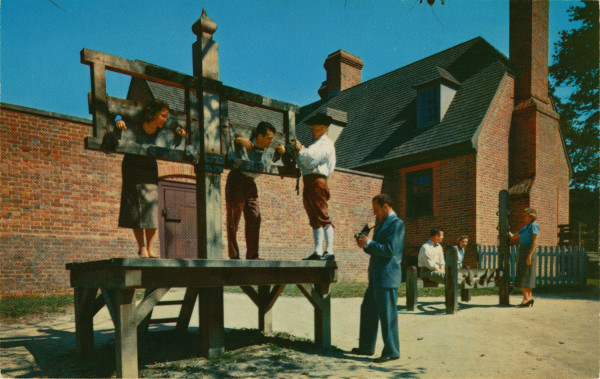
Colonial Williamsburg Foundation.
Yesterday’s public humiliation is today’s photo op. Colonial Williamsburg’s pillory, shown here in front of the Public Gaol, can be found next to the Courthouse at Market Square.

Colonial Williamsburg Foundation.
Jefferson danced here. Political leaders planned a revolution here. Slaves were auctioned here. Interpreters discuss all that and more in Colonial Williamsburg tours and programs, but you won’t find them wearing hoop skirts. Research continues to contribute to our understanding of what colonial Virginians wore on an everyday basis.
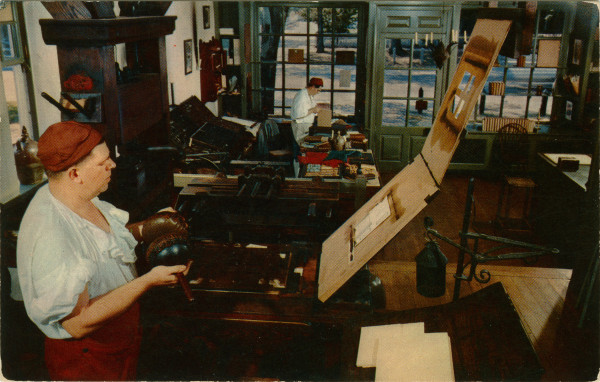
Colonial Williamsburg Foundation.
Don’t skip a visit to the printing office. Tucked behind the post office instead of facing Duke of Gloucester Street, it features a working 18th-century printing press. You’ll see the real labor that went into spreading revolutionary ideas.
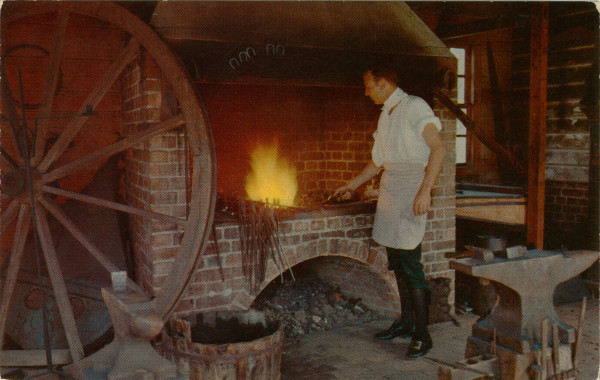
Colonial Williamsburg Foundation.
The art of the Blacksmith is practiced in the same way that it was a half a century ago, but it takes place in one of the newest reconstructions in town, James Anderson’s Blacksmith Shop and Public Armoury. The site features the Armoury, four blacksmith forges, and a tin shop.

Curt Teich & Co., Chicago, Ill. Visit their archive.
Long-stemmed white clay smoking pipes aren’t the rage today, but they are among the most common archaeological finds in the area. Chowning’s, an 18th-century-style alehouse. Come warmer weather, don’t miss Gambols, with music, games, and historic brews into the wee hours.

Detroit Photographic Co.
The courthouse, one of Colonial Williamsburg’s original buildings, looks much the same as it did 100—or even 200—years ago. Come inside to participate in a re-creation of an 18th-century court case.
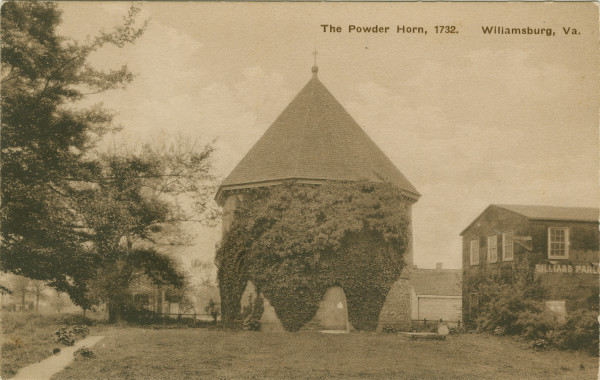
The Albertype Co., Brooklyn, N.Y.
The Magazine is where the town once stored its gunpowder. And just one day after the battle at Lexington and Concord, the powder disappeared, courtesy of Lord Dunmore, the colonial governor. Before the restoration of Williamsburg, the Magazine had grown thick with ivy and was next door to a billiard hall.
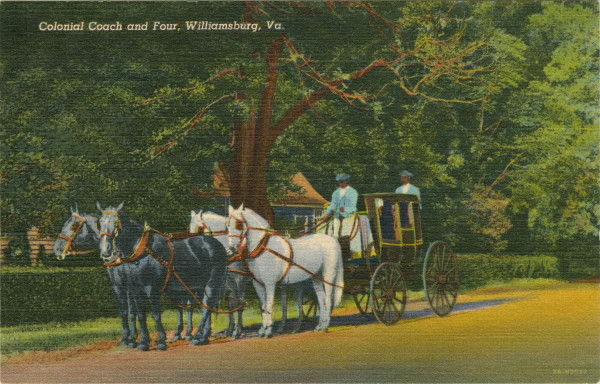
Curt Teich & Co., Chicago, Ill. Visit their archive.
Carriage rides are still a favorite way to take in the sights, with drivers acting as personal tour guides. Six different carriages, including the Randolph Coach pictured here, are used for tours leaving from the Lumber House near Palace Green.
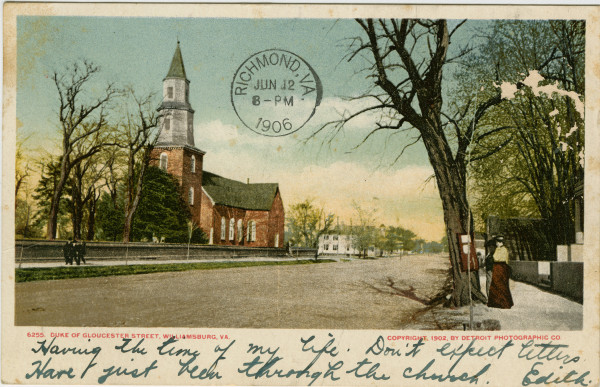
Detroit Photographic Co.
“Having the time of my life. Don’t expect letters,” reads the message on this postcard sent in 1906. Bruton Parish Church was an attraction even before the reconstruction. The church celebrated its 300th anniversary in 2015.
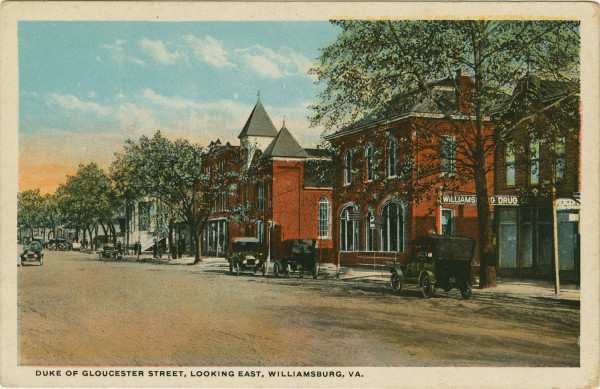
Louis Kaufmann & Sons, Baltimore, Md.
A 1916 view shows modern buildings, including the Methodist church, the First National Bank, and Williamsburg Drug Co. on the south side of Duke of Gloucester Street. Today the street is closed to traffic, and you will find Greenhow Store and other 18th-century trades on the block.
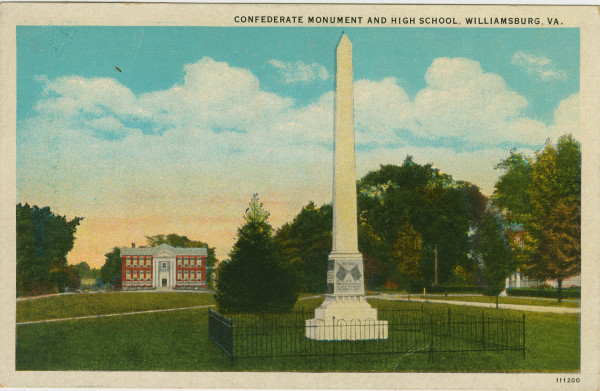
Louis Kaufmann & Sons, Baltimore, Md.
Palace Green looked very different before the restoration. In the 1920s there was a high school where the Governor’s Palace now stands. The Confederate Monument, shown here, can still be seen in Bicentennial Park behind the DeWitt Wallace Decorative Arts Museum.
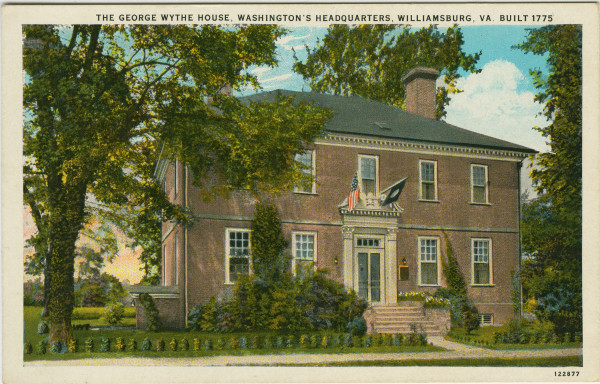
Louis Kaufmann & Sons, Baltimore, Md.
George Wythe’s house on Palace Green was George Washington’s headquarters before the siege of Yorktown in 1781. The restoration replaced a two-story porch on the front door with a design influenced by the nearby Westover Plantation. Today it has an even simpler facade, reflecting newer research. Contrary to the postcard, Wythe House was actually built in the early 1750s.
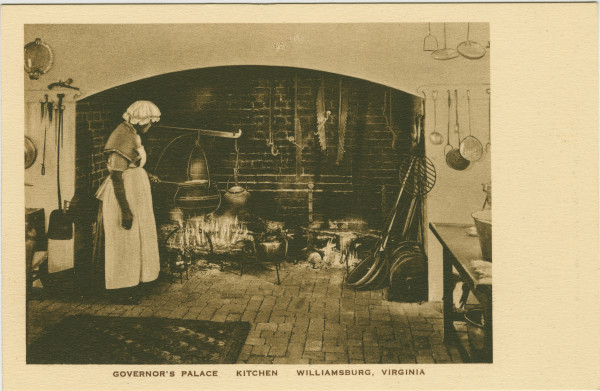
The Albertype Co., Brooklyn, N.Y.
Several postcards from the 1930s and 1940s identify “Aunt Mary,” pictured here, as “one of the old cooks of Williamsburg” who had been born into slavery. She was one of the early African American interpreters, tending the kitchen in the rebuilt Governor’s Palace.
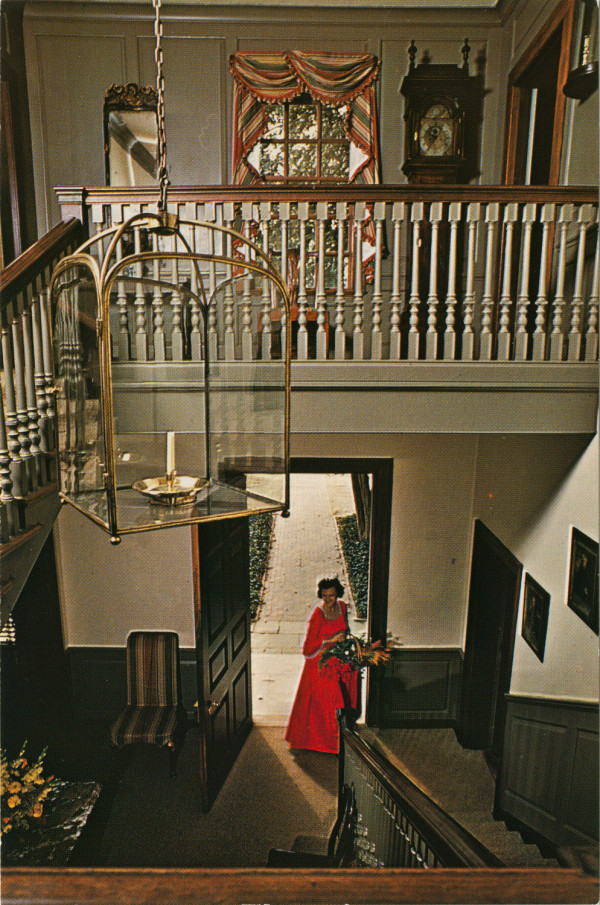
Colonial Williamsburg Foundation.
Research brings change. The front hallway of the Randolph House, for example, has a gothic pillar and arch wallpaper. The interpretation of the site now includes the lives of the 28 slaves who shared the space with the family of a founder—Peyton Randolph. The interior is decorated with items found in the estate inventory of 1776.

Curt Teich & Co., Chicago, Ill. Visit their archive.
Finally, a classic view of the Governor’s Palace garden. What memories will you make on your next visit? Share them in the comments below!
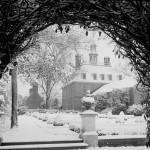
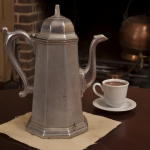
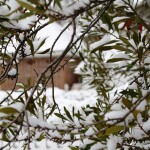
A few months back I found a collection of Williamsburg and Yorktown cards at an antique store in Berkeley Springs, WV and wrote a blog post about them, with details and some history. If interested,
http://nostalgicvirginian.com/2016/11/antique-shop-find-a-collection-of-virginia-postcards-from-decades-past/
I have been collecting Williamsburg since I was a child. I have most of the ones in the story as well as about 200 more. Some time I hope to visit the Rockefeller Library to get copies as place holders in my collection.
And there are always more cards to hunt for!
The Printing Shop postcard is probably taken when that trade was in the Prentis Store (before it was fully restored to its colonial appearance)
I agree. My father was the bookbinder Clem Samford
The Governor’s Palace and Raleigh Tavern postcards are my favorites! What great pictures! We visit a few times a year from New Jersey. Reminds us of a time in history that we should all reflect upon and remember the sacrifices that were made for our freedoms today.
Great images from the past. Thank you, Colonial Williamsburg, for the sophisticated research creating an ever-more authentic restoration even as we move farther away from the Colonial period.
If you are interested in an outstanding collection of Williamsburg postcards, please visit this website: http://williamsburg.kspot.org